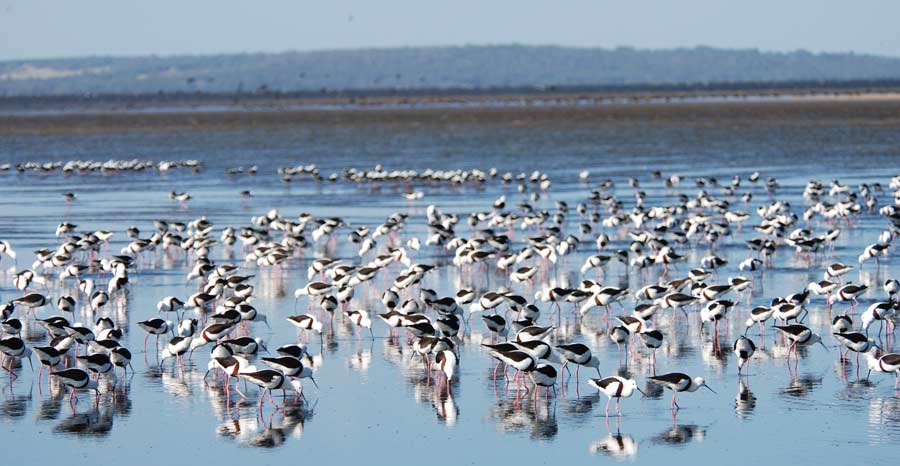
by GreenSkills | Jun 9, 2017 | Green Skills Inc. - Sustainability Non-Profit
Since 2011 Green Skills has conducted an extensive program of activities to assist an enthusiastic network of bird conservationists in raising the issues affecting migratory shorebirds.
 An annual survey of shorebird populations has been undertaken since 2011, culminating in a conservation report, plus seminars and workshops.
An annual survey of shorebird populations has been undertaken since 2011, culminating in a conservation report, plus seminars and workshops.
A range of awareness raising activities and events have also been developed – such as installing signage, distributing newsletters.
Since 2013, an annual South Coast Festival of Birds has been a major community involvement program.
Key Reports
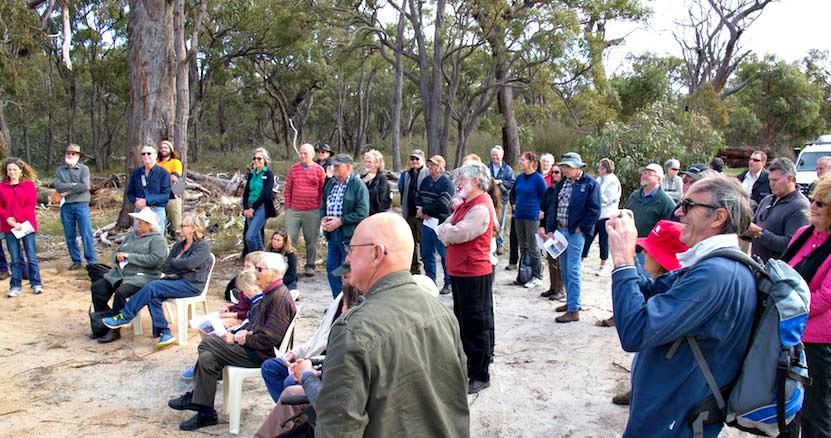
by GreenSkills | Jun 9, 2017 | Green Skills Inc. - Sustainability Non-Profit
Balijup Farm in Tenterden is a special place, with over three quarters of the 921ha property consisting of remnant bushland and wetlands.
It is an extremely important link between the Stirlings Ranges and the Forests area. The wetlands scattered across the property are all part of the Unicup Suite of wetlands in the Kent River Catchment. These wetlands have been identified as ‘significant’ on a national database and play a significant role in providing habitat for some of the international migratory wader bird species.
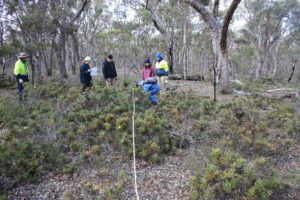 Green Skills has worked with the owners since 2010 to assist with fencing off all the bushland on the property, to undertake biological survey and ecological mapping, undertaking feral bee colony surveys and eradication, and wetland assessments.
Green Skills has worked with the owners since 2010 to assist with fencing off all the bushland on the property, to undertake biological survey and ecological mapping, undertaking feral bee colony surveys and eradication, and wetland assessments.
The latest key project at Balijup Farm is the creation of the Fauna Conservation Enclosure. The fenced enclosure of 110ha provides a major focus for native fauna conservation and community education in this part of the Gondwana Link.
The enclosure will establish breeding populations of Quenda (Southern Brown Bandicoot) and other species for eventual relocation on other properties throughout the Gondwana Link. The project is guided by an extensive scientific and technical committee and an ongoing citizen science program.
On 10th August 2017, Green Skills installed 15 Phascogale nesting boxes within the Balijup Fauna Sanctuary near Tenterden.
You can read more about the project here:
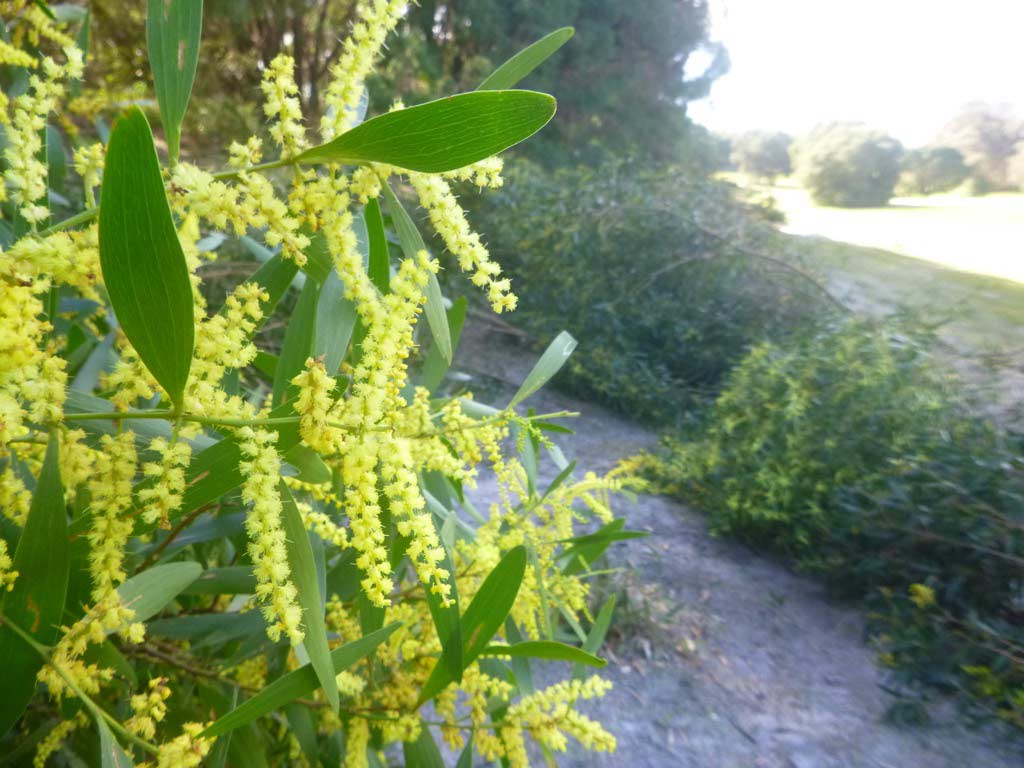
by GreenSkills | Jun 9, 2017 | Green Skills Inc. - Sustainability Non-Profit
Lower Great Southern Regional Coordination of Weedy Wattle Control 2016-2018
Weedy wattles in the Lower Great Southern Region are having a devastating impact on many areas of natural vegetation. Control of these weeds is a challenge faced by local government, state government departments, farming properties, businesses and residents. Intermittent, sporadic and uncoordinated control has lead to inefficient use of resources with limited outcomes.
In this project Green Skills will take on the coordination of control activities, so all stakeholders work together to protect our native vegetation and move towards control of these invasive species. The focus will be primarily on Acacia longifolia, but will also address other weedy Acacia species.
 Biodiversity is the key value for this project. Acacia longifolia is a large tree and rapidly becomes a monoculture in this region. It also increases the nitrogen level in the soil enough to prevent the regeneration of indigenous species. Without its natural constraints, it grows to be a larger tree and sets more seed in the Great Southern area than it does around Sydney. It is currently doubling its spread in the Albany area every five years (John Moore, eBioSys survey for South Coast NRM 2010). As it is spread by birds, it is disseminated widely and can infest high value conservation areas repeatedly from a considerable distance.
Biodiversity is the key value for this project. Acacia longifolia is a large tree and rapidly becomes a monoculture in this region. It also increases the nitrogen level in the soil enough to prevent the regeneration of indigenous species. Without its natural constraints, it grows to be a larger tree and sets more seed in the Great Southern area than it does around Sydney. It is currently doubling its spread in the Albany area every five years (John Moore, eBioSys survey for South Coast NRM 2010). As it is spread by birds, it is disseminated widely and can infest high value conservation areas repeatedly from a considerable distance.
The Albany hinterland, including Porongurup National Park, Torndirrup National Park, Two Peoples Bay Nature Reserve and Mount Manypeaks Reserve, supports a diverse range of endemic flora and fauna species, many of which are threatened by feral animals and loss of habitat by weed incursion. As Manypeaks and Two Peoples Bay reserves are currently free of Acacia longifolia, it is essential to control populations of wattle in the vicinity.
The intended outcome of this project is to have a strong network of stakeholders, both private and public, who maintain the partnerships leading towards effective control of these woody weeds. The mapping will have ongoing benefits for all stakeholders to guide continued treatment, and monitor past work. An expectation of the project would be to have twenty ‘champions’ throughout the region, to continue treatment work in their local communities.
This project is supported by funding from the Western Australian Government’s State NRM program.
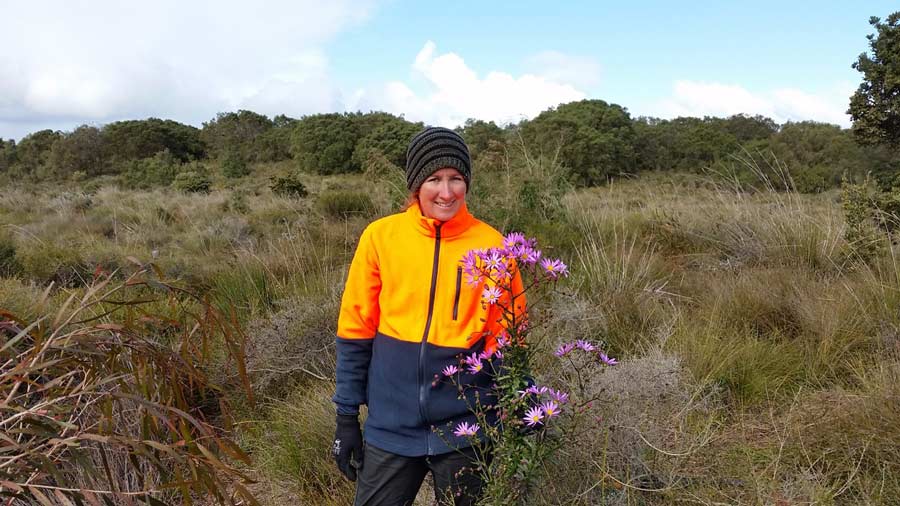
by GreenSkills | Jun 9, 2017 | Green Skills Inc. - Sustainability Non-Profit
Green Skills has been actively controlling senecio glastifolius with the support of the City of Albany, DPaW and South Coast NRM since 2006 when it was first brought to our attention.
A native South African species, senecio has the impact of outcompeting our native species, and spreading seed on the summer easterlies along the south coast. Uncontrolled, it threatens our global biodiversity hotspots in the Stirling, Fitzgerald River, and West Cape Howe National Parks.
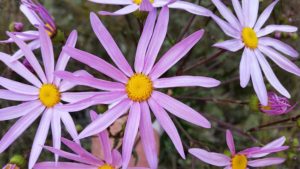 This highly invasive weed quickly spreads through disturbed or burnt areas, creating a monoculture and diminishing opportunity for native species regrowth. It is particularly invasive in damp open areas where it can dominate understory growth. It can also spread rapidly along fire breaks.
This highly invasive weed quickly spreads through disturbed or burnt areas, creating a monoculture and diminishing opportunity for native species regrowth. It is particularly invasive in damp open areas where it can dominate understory growth. It can also spread rapidly along fire breaks.
Senecio was spread to Mt Clarence from a home garden before 1986, and has spread to many areas, with the highest priority along the coastline in Sandpatch Reserve. The seed can spread on the summer easterlies for over a kilometre, making the best action to remove the weeds before setting seed.
This project is supported by funding from the Western Australian Government’s State NRM program.
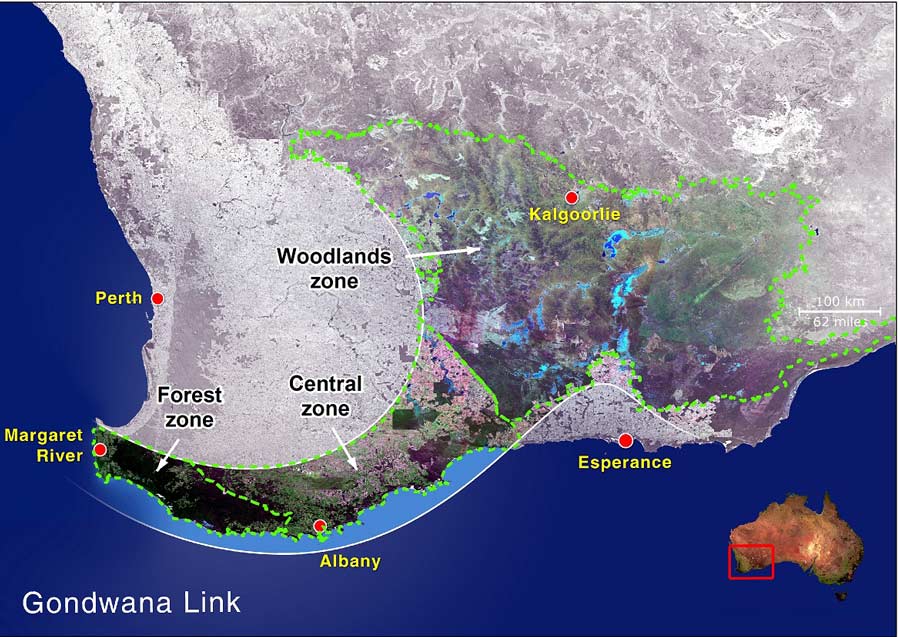
by GreenSkills | Jun 9, 2017 | Green Skills Inc. - Sustainability Non-Profit
Green Skills is a key partner in the Gondwana Link an iconic landscape scale conservation project with an international reputation.
Green Skills focuses primarily on the Forests to Stirling section and works collaboratively with a large number of organisations, stakeholders and landholders to restore ecological connectivity in that part of the Link. The work is guided by a Conservation Action Plan which Green Skills had a significant role in developing.
Guided by the CAP, Green Skills has coordinated a large number of initiatives:
- Extensive surveys, mapping and management reports to guide restoration activities;
- Assisting landholders to fence off bushland and wetlands;
- Working with Shire of Cranbrook to survey and control weeds in roadside vegetation;
- A substantial program of community awareness raising workshops and community events.
Key Reports

 An annual survey of shorebird populations has been undertaken since 2011, culminating in a conservation report, plus seminars and workshops.
An annual survey of shorebird populations has been undertaken since 2011, culminating in a conservation report, plus seminars and workshops. 


 Green Skills has worked with the owners since 2010 to assist with fencing off all the bushland on the property, to undertake biological survey and ecological mapping, undertaking feral bee colony surveys and eradication, and wetland assessments.
Green Skills has worked with the owners since 2010 to assist with fencing off all the bushland on the property, to undertake biological survey and ecological mapping, undertaking feral bee colony surveys and eradication, and wetland assessments.
 Biodiversity is the key value for this project. Acacia longifolia is a large tree and rapidly becomes a monoculture in this region. It also increases the nitrogen level in the soil enough to prevent the regeneration of indigenous species. Without its natural constraints, it grows to be a larger tree and sets more seed in the Great Southern area than it does around Sydney. It is currently doubling its spread in the Albany area every five years (John Moore, eBioSys survey for South Coast NRM 2010).
Biodiversity is the key value for this project. Acacia longifolia is a large tree and rapidly becomes a monoculture in this region. It also increases the nitrogen level in the soil enough to prevent the regeneration of indigenous species. Without its natural constraints, it grows to be a larger tree and sets more seed in the Great Southern area than it does around Sydney. It is currently doubling its spread in the Albany area every five years (John Moore, eBioSys survey for South Coast NRM 2010).
 This highly invasive weed quickly spreads through disturbed or burnt areas, creating a monoculture and diminishing opportunity for native species regrowth. It is particularly invasive in damp open areas where it can dominate understory growth. It can also spread rapidly along fire breaks.
This highly invasive weed quickly spreads through disturbed or burnt areas, creating a monoculture and diminishing opportunity for native species regrowth. It is particularly invasive in damp open areas where it can dominate understory growth. It can also spread rapidly along fire breaks.